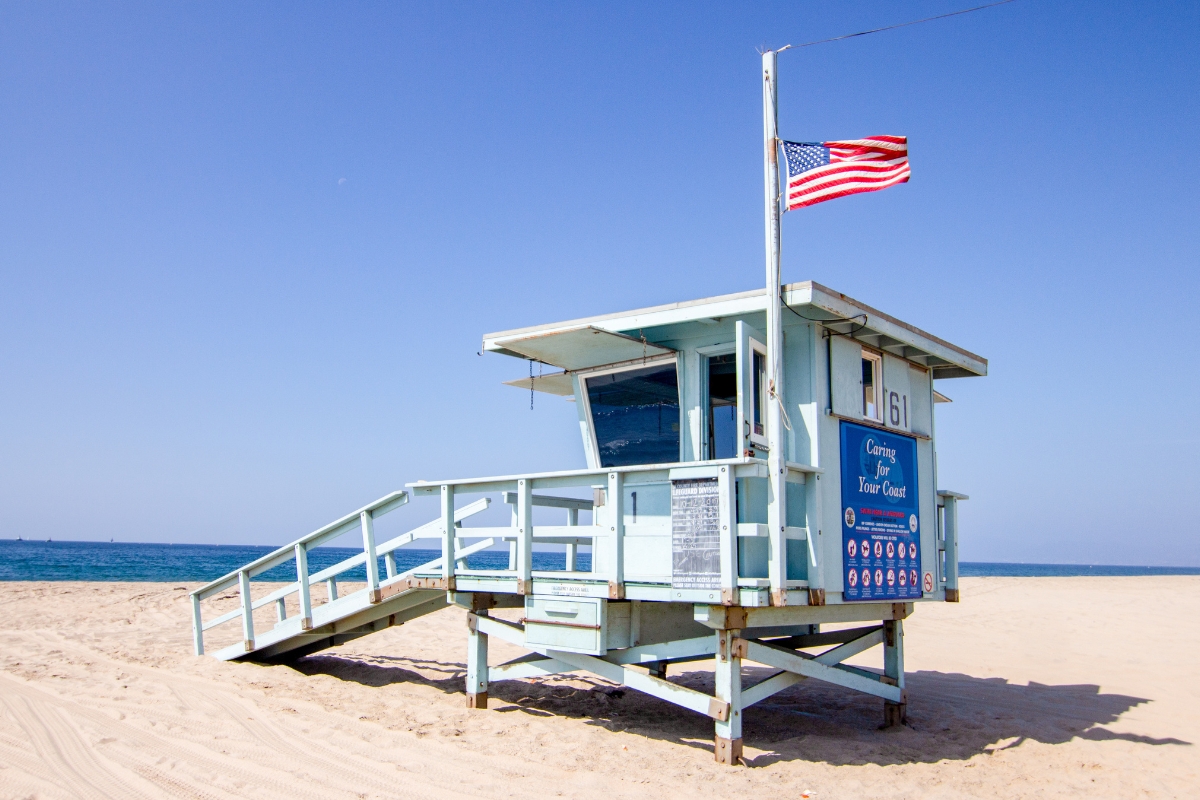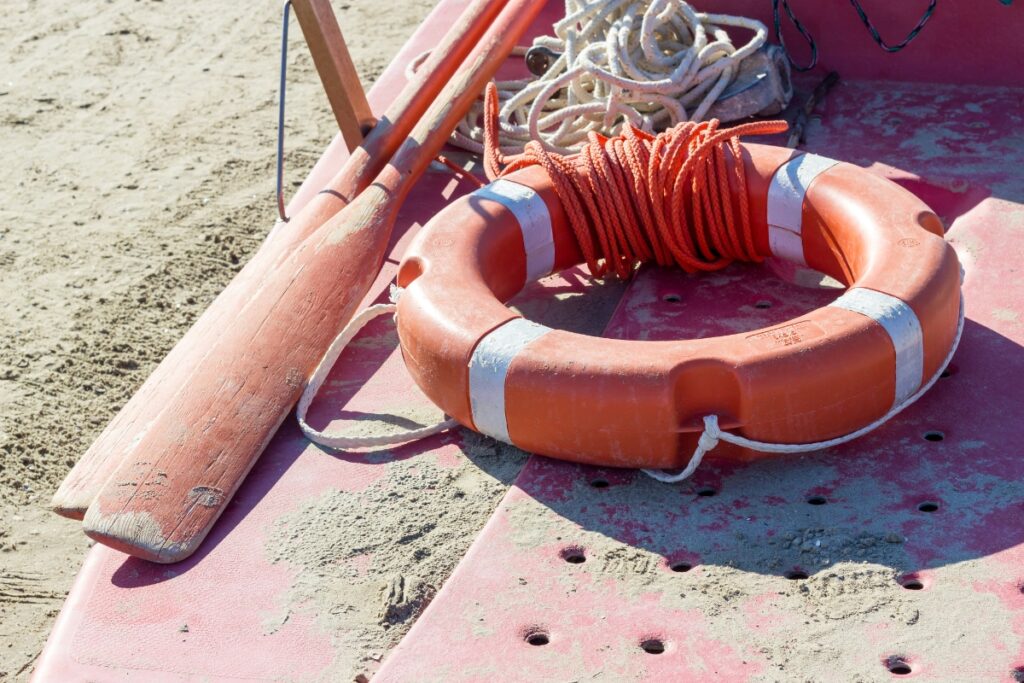
From CPR to Rescue Dives: A Comprehensive Overview of Lifeguard Training
May 24, 2024
Every year, lifeguards play a crucial role in ensuring the safety and security of thousands of individuals at pools, beaches, and lakes worldwide. The American Lifeguard Association plays a significant role in lifeguard training programs, offering certification and emphasizing public awareness of responsibility in aquatic environmental issues. Their job extends beyond monitoring water activities; lifeguards are first responders who can mean the difference between life and death in emergency situations. In this comprehensive guide, we will explore the essential aspects of lifeguard training, detailing each step from basic certification to advanced rescue techniques.

Basic Lifeguard Training
Understanding the Role
A lifeguard’s primary duty is to ensure the safety of all swimmers within their watch area. As a certified lifeguard, they must be vigilant, able to identify signs of distress or danger quickly, and prepared to enforce safety regulations effectively. Part of their role also involves educating visitors about safety rules and how to avoid common water hazards.
Prerequisites for Training
Individuals interested in lifeguard training typically need to be at least 16 years old, have basic swimming proficiency, and pass a pre-course swimming skills test. This test often includes a timed swim to demonstrate speed and endurance, along with skills assessments such as treading water and retrieving objects from the pool’s bottom.
Additionally, candidates must pass a written exam with a score of 80 percent or higher to verify proficiency in lifeguard-related rules, and the certification is valid for two years.
Lifeguard Certification Programs
Various organizations offer lifeguarding certification, including the American Red Cross and YMCA. The American Lifeguard Association also provides comprehensive certification programs, emphasizing public awareness of responsibility in aquatic environmental issues. These programs typically involve 25-30 hours of instruction and practical training, covering topics such as water rescues, first aid, CPR, and the use of AEDs. Upon completion, certifications are valid for two years, necessitating recertification thereafter.

CPR and First Aid Training
Importance of CPR Certification
Prompt and effective CPR, as part of comprehensive safety training, can dramatically increase the survival rate of victims in drowning incidents. For lifeguards, being proficient in CPR and knowing when and how to use an AED are crucial for effective emergency responses.
Training Components
CPR training for lifeguards is rigorous, combining theoretical knowledge with practical, hands-on practice. Lifeguards learn essential rescue skills, including the latest protocols for providing high-quality chest compressions, ventilations, and the use of AEDs on adults, children, and infants.
Renewal and Recertification
Given the importance of these skills, lifeguards must regularly recertify their CPR and First Aid credentials every two years to stay up-to-date with best practices and new techniques that may have developed.
Successful completion of these recertification courses is required to ensure that lifeguards maintain the necessary skills and knowledge for effective lifeguarding.

Advanced Rescue Skills and Techniques
Rescue Diving Fundamentals
For lifeguards working at beaches and lakes, advanced rescue diving skills are critical. Training includes methods for safely entering the water and securing a victim, minimizing risk to the rescuer, and handling victims who may be unconscious or in shock.
Additionally, lifeguard training includes specific courses on shallow water lifeguarding, designed for water up to 5 feet deep, to ensure proper knowledge and skills for preventing accidents and injury.
Handling Spinal Injuries
Managing spinal injuries is a critical skill, and effective safety programs are essential in preventing and managing such injuries. Improper handling can lead to permanent damage or paralysis. Lifeguards are trained to stabilize the victim’s neck and back during rescues to prevent any movements that could exacerbate the injury.
Scenario-Based Training
Realistic, scenario-based training courses are crucial for developing the decision-making skills necessary to assess situations quickly and react appropriately. These scenarios may include simulated drownings, injured swimmers, or mass casualty incidents.

Lifeguarding Equipment and Technology
Essential Equipment
Lifeguarding courses equip lifeguards with the knowledge and skills to use various tools essential for rescues and medical emergencies, including rescue tubes, spinal boards, first aid kits, and more. Mastery of these tools is essential for effective rescue operations.
Technology in Lifeguarding
Advancements in technology have significantly enhanced the effectiveness of lifeguard operations. Drones, for example, can provide aerial views of large swimming areas, allowing quicker identification of swimmers in distress. Communication devices like two-way radios ensure lifeguards can quickly call for additional assistance when needed.
YMCA lifeguard training incorporates these technological advancements into their programs, ensuring lifeguards are well-prepared for modern challenges.

Physical and Mental Preparedness
Physical Fitness Requirements
Lifeguards must maintain excellent physical fitness to perform their duties effectively, which is why a comprehensive training course is essential. Regular physical training ensures they can swim quickly, perform rescues, and administer prolonged CPR if necessary.
Stress Management Techniques
Handling high-pressure situations calmly and effectively is crucial for lifeguards. Safety training programs often include techniques for managing stress, helping lifeguards maintain composure and make critical decisions during emergencies.

Legal and Ethical Considerations
Understanding Legal Responsibilities
Lifeguards must understand the legal implications of their actions and inactions. They are often considered the first line of response in aquatic environments and can be held legally responsible for mishandling situations.
Successful completion of training programs is essential for legal compliance, ensuring lifeguards are adequately prepared to handle emergencies.
Ethical Practices
Professionalism and adherence to ethical standards are paramount in lifeguarding, including the development and administration of comprehensive safety programs. Lifeguards must consistently display integrity, respecting the privacy and dignity of victims and other parties involved in incidents

Get Certified with urSwim
Ready to take the next step in your lifeguarding career? Get certified with urSwim, an authorized provider of the American Red Cross—the gold standard in lifeguard certification and aquatic training. Our lifeguard training course covers everything from accident prevention and lifeguarding techniques to emergency systems, rescue skills, CPR for professional rescuers, and first aid.
Our comprehensive courses are meticulously designed to equip you with the skills and knowledge required to be a confident and capable lifeguard, ensuring the safety of swimmers in any aquatic setting.
Customized Scheduling: At urSwim, we understand the demands of your business. We work with you to find suitable dates and times for the training sessions, ensuring minimal disruptions to your operations.
Expert Instructors: Our training programs are led by expert instructors who tailor their approach to meet the unique needs of each participant, whether you are a young beginner or an adult enhancing your swimming skills. Our goal is to make every training session effective, informative, and engaging for everyone involved.
Don’t miss the opportunity to enhance your skills with top-notch aquatic training. Contact urSwim today to schedule your lifeguard certification course and join the community of dedicated professionals committed to safety and excellence in aquatic environments.
Marina Mentzel is a dynamic leader shaping the aquatics management industry. A former competitive swimmer, Marina founded urSwim in 2011 with a deep love for swimming and a passion for sharing it with others.
MARINA MENTZEL
urSwim Founder & CEO
see all posts
Leave a Reply Cancel reply
View our Services!
No matter what your swimming needs are, we can help get you there, stroke by stroke!